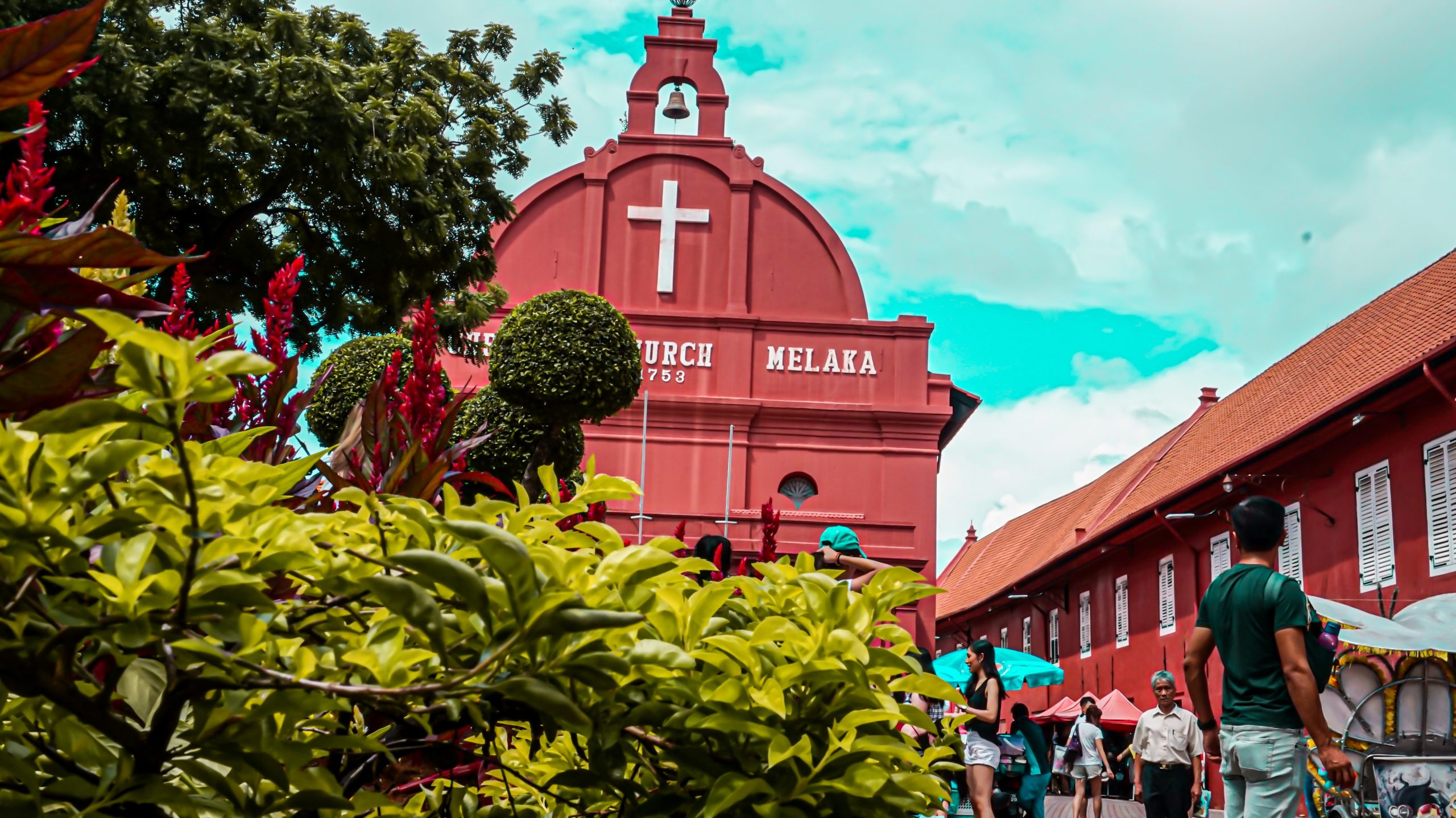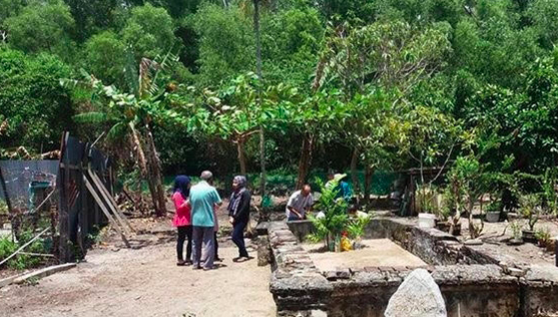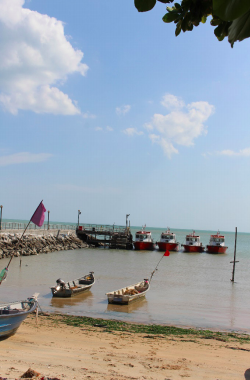
Kampung Hailam, Malacca
Published on August 15, 2020 | by Yvonne Tan & Dennis Ong
“The scenic beachfronts of our town are disappearing.” This casual yet wistful mention is not uncommon especially amongst folks living in the coastal areas. Unrelenting efforts from local residents, nature activists, fishermen and guardians of heritage, championing sustainable preservation and development, are often dampened by mighty capitalists and short-sighted parties. Depressing as it may be, the case of Kampung Hailam in Tanjung Kling, Malacca was one of many such examples.
In May 2015, Kampung Hailam was demolished following a decision by the Sessions Court which found that the land occupied by the village was without a title. More than 200 residents of this pre-WWI coastal village made up of 50 homes were ordered to vacate by landowner Mara Holdings Sdn Bhd by 13 March 2017 to make way for the construction of high rises in the name of development. It had also been stated that failure to leave would incur a monthly rental charge of RM1,000, and this would be increased to RM2,000 in June.
All was grey, at that point, the easiest solution to retaining the land was through the purchase of the village land from Mara Holdings Sdn Bhd, however, it was not feasible as the sum of money was way beyond the means of the residents, and all this was of course subject to the decision of Mara Holdings Sdn. Bhd. Many had thought that the local political representative in the constituency could have done much more to settle this dispute and introduce a solution that was favourable and deemed fair to residents; meanwhile, what the Malacca Hainan Association, a dialect group-based association for the Hainanese of Malacca, could do was limited.
In light of disputes involving land ownership, rights and development, we were motivated to document the social history of Kampung Hailam and the lives uprooted since. Dennis Ong and Yvonne Tan were very fortunate to have interviewed former residents of Kampung Hailam, Rina Lim Mei Yong and her father Lim Yoke Chye.
1. Kampung Hailam as one of the oldest Hainanese settlements in Malaysia, do you happen to know your family’s history and how they came to make their home in Kampung Hailam?
First and foremost, I would say that me and my two brothers were very well taken care of by our late Nyonya grandma as our parents were away working in Sabah, Sarawak, Brunei and also in West Malaysia under Pernama (a retail chain wholly owned by Lembaga Tabung Angkatan Tentera catering specially to fellow servicemen and servicewomen in the Malaysian Armed Forces). My late Nyonya grandma married my late Grandpa who was a Hainanese. He was a fisherman and originated from Hainan Island, China. How he came to Malaysia (Malaya) and ended up marrying my late Nyonya grandma, I won’t be able to share more in detail. Vaguely, I can recall that my late Nyonya grandma used to tell us stories during their days under Japanese occupation and how they hid themselves way behind our kampung. They ate tapioca, sweet potatoes and no rice. My grandpa passed away when I was 5 years old or so. It was my late Nyonya grandma who brought us up according to her strict Baba Nyonya upbringing. She used to say, in front of our house was a field for producing salt. I can’t remember how they arrived in here.
2. I read that when there was a call to demolish Kampung Hailam on 12 January in 2017, asking for residents to relocate by 10 February. But residents appealed for an extension as they had to celebrate Chinese New Year and a meeting on 13 February between the government and lawyers representing the house owners and landowners agreed to extend the deadline to 13 March. Could you tell us more about how that Chinese New Year went?
We, residents of Kampung Hailam, were so emotionally saddened and we tried to be cheerful and still to continue with our legacy to decorate our homes with Chinese New Year decorations, to continue with our spirit of celebrating Chinese New Year for the last time here. We decorated some of the trees and the boat huts in front of my house and in my neighbours’.
On the second day of Chinese New Year, we held our last Chinese New Year celebrations together at Malacca’s oldest swimming club – The Rotunda. That very night we chatted, laughed away happily as we shared our childhood memories together. We recalled back our times of growing up together. Life is short, and we tried to make it to the fullest and be happy, to accept what may come and encounter together.
3. Hang Tuah’s Mausoleum, a central figure in the Malacca Sultanate that still holds significance until today is located literally down the road from Kampung Hailam. Could you tell us more about the relationship of Kampung Hailam with Hang Tuah? Do they believe the grave is real or holds some particular significance/non-significance to the community?
As for Hang Tuah’s Mausoleum, I really have no idea as we were still very young to understand the history of Hang Tuah…perhaps can asked the nearby Malay residents there.
4. There was a keramat in the settlement, what do you know about it that you can share with us? That’s the Nik Dayang Keramat, situated right in the middle of Kampung Hailam, it was there way before Kampung Hailam existed and perhaps a few hundred years ago as I have heard. I can only remember that my late Nyonya grandma used to tell me that every Friday evening, she would bring some bananas or fruits there to offer some prayers. 5. What are your favourite spots in the settlement? What are they and why? What are your fondest memories of Kampung Hailam? My favourite spot is our lovely beach. Since I was young, we would love to stroll along the beach to find and collect seashells, build sandcastles and so on. My fondest memories in Kampung Hailam was of course, our childhood upbringing whereby we treat each other like brothers and sisters; we had parties and organised short trips together with the little money we had that time.
5. What are your favourite spots in the settlement? What are they and why? What are your fondest memories of Kampung Hailam?
My favourite spot is our lovely beach. Since I was young, we would love to stroll along the beach to find and collect seashells, build sandcastles and so on. My fondest memories in Kampung Hailam was of course, our childhood upbringing whereby we treat each other like brothers and sisters; we had parties and organised short trips together with the little money we had that time.

Figure 1 The Makam Nik Dayang in Kampung Hailam
6. How would you describe the relationship and bond among settlers of the village? We were all very close knitted residents in Kampung Hailam. Many of our childhood friends among us have married to each other. So, in a way we can assume that we are already related to each other. As I have been staying in Johor Bahru for quite some time, whenever I am back at Kampung Hailam I get to enjoy our neighbours’ cooking, exchanging nice Hainanese authentic dishes, among other things. This is how happy our lives were while staying in Kampung Hailam. We got to share moments like playing mahjong with aunties or uncles. It’s really fun spending time with them as I missed this kind of real moments growing up in Kampung Hailam. They cracked jokes, stories telling of their times and many more.
***

Figure 2 Rina Lim’s father Lim Yoke Chye, a jovial and easy-going personality, shared his memories of staying in the village
He recalls that, on the same site where the family house was before the village was demolished, was a huge attap house raised higher than ground level with several rooms rented out to fishermen. Coincidentally, the owner of this attap house was also a Mr Lim who, in his later years, decided to return to his homeland in Hainan Island, China.
Consequently, he sold the attap house to Lim Yoke Chye’s father who managed to amass enough money, a sum of which from pawning valuables given to him by his Nyonya mother-in-law from Bukit Rambai, Malacca and successfully secured the purchase. Lim Yoke Chye remembers the bountiful seafood that once thrived in the sea here, sadly, land reclamation projects have proven to be destructive to wildlife and the climate.
In the photo, behind Lim Yoke Chye, is the Kampung Hailam seafront and wishing trees adorned with plentiful ribbons, each containing kind wishes. “This is a very nice area! No joke!” says Lim Yoke Chye in his Baba accent – a simple and yet strong justification to the attachment and love the residents have for the land they have long called home.

A large field in the village where sports were played and various community activities
were held. Luscious greenery made up of fruit trees, Casuarina trees and coconut trees, among others, offers peace, in sight and in mind

Figure 4 The Kampung Hailam pier and beachfront with boats parked on its shore.

Figure 5 Typical examples of houses in the village

Figure 6 A village without houses and
residents. Some scenes depicting the
physical destruction of the village

Figure 7 A house under demolition

Figure 8 The removals truck








